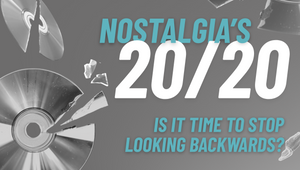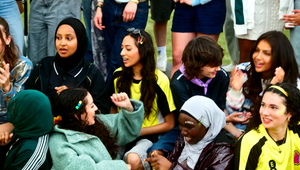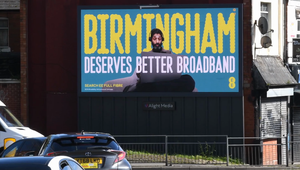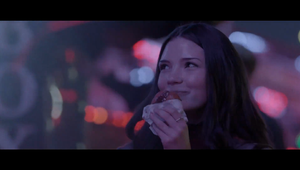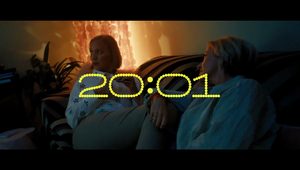
Planning for the Best: Why a Creative Idea Is Only the Beginning with Scott Green

Scott has worked in the OOH sector for nearly 15yrs. Initially within the guerrilla/ambient space for music industry clients before swapping the bands for brands and joining Dentsu as a planner at the OOH Specialist Posterscope. He is always intrigued by our relationship with the world around us and just how powerful, versatile and resilient OOH is as a communication channel.
LBB> What do you think is the difference between a strategist and a planner? Is there one?
Scott> Yes. No. Does it matter? I like the quote ‘Without strategy, execution is aimless, without execution strategy is useless.’ There’s distinct differences and obvious similarities between strategists and planners. They are two sides of the same coin, and there’s much overlap.
‘Strategist’ sounds quite lofty, but it becomes apparent when you work with a strategist how they think. The sense they have. How they view and interpret situations and the clarity they provide that can motivate and direct creativity. Strategy is relative though. At a specialist media agency such as Posterscope, we interpret and modify strategy, creative and planning as a channel strategist. What to do, or perhaps more importantly, what not do within the OOH landscape.
You might liken it to the architect who deals with the overall design vision and integration in the environment, and the builder who works with the details, the nuts, and bolts of construction. You need the expertise of both, particularly on new and custom-built projects.
LBB> And which description do you think suits the way you work best?
Scott> Strategic planner. My background is planning and account management so as a channel strategist I combine a depth of knowledge on OOH, a vast territory of human experience and behaviour, with media and client service experience to interpret, modify and join the dots.
LBB> We’re used to hearing about the best creative advertising campaigns, but what’s your favourite historic campaign from a strategic perspective? One that you feel demonstrates great strategy?
Scott> I love Guinness. I love the brand and I love how its consistently conveyed strength of character. From ‘Guinness is good for you’, to the famous surfer ad ‘Good things come to those that wait’ and then the ‘Made of More’ campaigns.
But one campaign that really stands out, which also tapped into strength of character, is Channel 4’s Paralympics ‘Superhumans’. It shifted public attitudes forever and elevated the conversation. It completely flipped the script. By revealing the human angle, it shifted from the inherent negativity of disability, and playing second fiddle to the Olympics, to endurance, determination, defiance … the strength of character of Paralympians.
It was really powerful. I loved the sync with Public Enemy and the simple, bold ‘Meet the Superhumans’ poster. And I really loved the teaser poster campaign at the end of the Olympics, ‘Thanks for the Warm-Up’. Cheeky, defiant and powerful across all media channels. This campaign captured not just the sporting event but the social movement. It pushed inclusivity front and centre, beyond disability, to challenge how we see each other and what success looks like. As it’s sport you might say it was a game changer. It felt like a reality check.
LBB> When you’re turning a business brief into something that can inform an inspiring creative campaign, do you find the most useful resource to draw on?
Scott> Sticking with the building analogy I’d have to say that it’s the Engineers. Colleagues in innovation, insight, data, trading, content, or marketing ultimately help to craft ideas into effective creativity. Ideas always benefit from playback to varying expertise and different perspective.
LBB> What part of your job/the strategic process do you enjoy the most?
Scott> Working with a range of clients and brands is the most rewarding aspect of my role. The variety keeps things interesting and there’s always opportunity to learn something new about brands and how they behave. I enjoy mixing seemingly unrelated learnings, observations, or experiences to unlock an idea. Connecting the dots.
LBB> What strategic maxims, frameworks or principles do you find yourself going back to over and over again? Why are they so useful?
Scott> As a specialist we interpret, challenge, and modify strategy to the context of OOH. ‘Context is King’ or McLuhan’s ‘The Medium is the Message’ work to help frame the OOH landscape and how different consumers and brands behave.
Similarly, Wieden & Kennedy’s quote ‘Our task is not nurturing enthusiasm but overcoming indifference’ illustrates OOH’s challenge and opportunity. Media is more fragmented and complex than ever, and people are busier. Businesses basically misunderstand how people really feel and behave toward brands, they’re not that interested in traditional advertising. So, brands need to understand how to behave in the context of OOH. Using creativity, innovation, or big ideas to connect emotionally and overcome indifference to earn attention. Maybe even a wry smile.
When I need to dig deeper, I tend to strip it back to Who, What, Where, When, Why and How. Distilling it down to Why, What and How gives me a basic strategic framework to tackle a challenge with Who, Where and When informing each stage and particularly useful at framing the context of OOH.
LBB> What sort of creatives do you like to work with? As a strategist, what do you want them to do with the information you give them?
Scott> I guess the observationalists. I think most creatives view OOH as a huge opportunity for creativity. It’s the oldest medium yet with simplicity, humility, and boldness it offers information, beauty, wit, charm, celebration, warmth, and elegance on a huge scale. It’s larger-than-life and constant. I think those with a keen sense of their surroundings, common sense even, to understand how people might behave or feel every day or in specific moments understand the power that the poster has - to be seen.
LBB> There’s a negative stereotype about strategy being used to validate creative ideas, rather than as a resource to inform them and make sure they’re effective. How do you make sure the agency gets this the right way round?
Scott> Justifying ideas by bolting on the strategy could appear lazy. A creative idea is only the beginning though. And generating creative ideas is hard. Good strategy should drive effective creativity, bringing together different teams to discuss, debate, and share ideas, which should help make the process easier. I’d say creativity works best as a collaborative process.
LBB> What have you found to be the most important consideration in recruiting and nurturing strategic talent? And how has Covid changed the way you think about this?
Scott> An inquisitive mind to discover things not obvious to others. Maybe a bit of a rebellious nature to challenge the status quo. And a good sense of humour to appreciate the incongruous, absurd, and outrageous that often connects the world around us. I think Covid is a good case in point.
LBB> In recent years it seems like effectiveness awards have grown in prestige and agencies have paid more attention to them. How do you think this has impacted on how strategists work and the way they are perceived?
Scott> Big creative ideas and campaigns that connect emotionally and endure are the key to brand success. With continued pressure on brands to deliver short-term results it’s understandable there’s an increased emphasis on effectiveness…and how to win at the box office.
Awards are nice. They honour hard work and the impact it has, and they show everyone how good people are at their craft. Strategic objectives shouldn’t fit in to the framework of annual events and winning awards though.
LBB> Do you have any frustrations with planning/strategy as a discipline?
Scott> The frustration is the challenge. Seeking to understand, coalesce and articulate ideas that work on various levels. The process can be frustrating. Absorbing as much information as possible…and then a bit more…before stripping it back and honing it to that one clear thought as the foundation from which to build again. Starting something, following it through, dropping it and starting again. Making choices about what not to do and sacrificing good ideas, especially your own, can be frustrating, particularly for others that work with you. That’s the challenge though.
LBB> What advice would you give to anyone considering a career as a strategist/planner?
Scott> Strategy is fluid, flexible and intangible so consider your own personality and behavioural traits and working characteristics. It’s not about being right but getting it right. And learning on the job.









